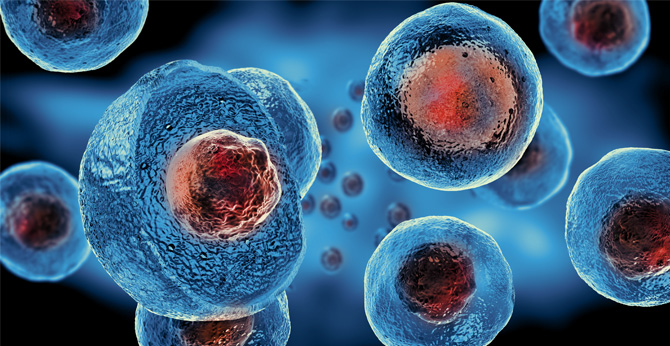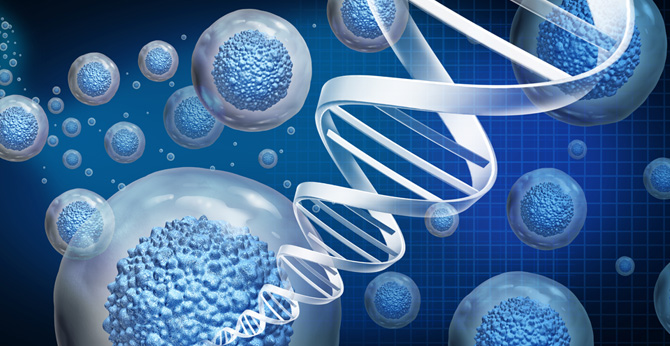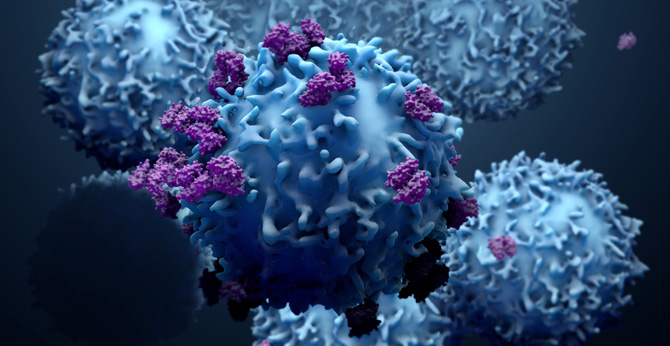All products and services are For Research Use Only and CANNOT be used in the treatment or diagnosis of disease.
The CD4 surface receptor is mainly expressed on distinct populations of thymocytes and mature T-lymphocytes, but also at lower levels on macrophages, monocytes, and dendritic cells. CD4 is an integral membrane glycoprotein of approximately 58 kDa that contains four extracellular domains showing sequence and structural homologies with members of the immunoglobulin superfamily. The function of CD4 in the antigen presentation process is to contact nonpolymorphic regions of the MHC-II molecules expressed at the surface of APC. CD4 acts as an adhesion molecule that stabilizes the interaction between the TCR and MHC-II molecules loaded with antigenic peptides, but it also participates in signal-transduction pathways. CD4 could be a receptor for the lymphocyte chemotactic factor IL-16 and the secreted gp17 glycoprotein. In addition to its physiological functions, CD4 serves as the primary surface receptor for the HIV. Binding of the viral envelope glycoprotein gp120 to CD4 mediates attachment of the HIV particle, which then enters the cell through subsequent interactions with other non-CD4 cellular receptors.
 Associated Disease
Associated Disease  Loading...
Loading...
| CAT | Product Name | Target Species | Antibody Clone | Antibody Host | Receptor Construction | Vector Type | Targeting Cell Type | CAR Vector Type | Inquiry & Datasheet |
| CAR-MZ243 | Anti-CD4 ligands, CD4 h(CD28-CD3ζ) CAR, pCDCAR1 | Human | Mouse | CD4-CD28-CD3ζ | Retroviral | T cell | |||
| CAR-MZ248 | Anti-CD4 ligands (10)×gp120 scFv h(CD28-CD3ζ) Bispecific CAR, pCDCAR1 | Human | Mouse | CD4-10-gp120 scFv-CD28-CD3ζ | Retroviral | T cell | |||
| CAR-MZ249 | Anti-CD4 ligands (35)×gp120 scFv h(CD28-CD3ζ) Bispecific CAR, pCDCAR1 | Human | Mouse | CD4-35-gp120 scFv-CD28-CD3ζ | Retroviral | T cell |
 NEWSLETTER
NEWSLETTER
The latest newsletter to introduce the latest breaking information, our site updates, field and other scientific news, important events, and insights from industry leaders
LEARN MORE NEWSLETTER NEW SOLUTION
NEW SOLUTION
CellRapeutics™ In Vivo Cell Engineering: One-stop in vivo T/B/NK cell and macrophage engineering services covering vectors construction to function verification.
LEARN MORE SOLUTION NOVEL TECHNOLOGY
NOVEL TECHNOLOGY
Silence™ CAR-T Cell: A novel platform to enhance CAR-T cell immunotherapy by combining RNAi technology to suppress genes that may impede CAR functionality.
LEARN MORE NOVEL TECHNOLOGY NEW SOLUTION
NEW SOLUTION
Canine CAR-T Therapy Development: From early target discovery, CAR design and construction, cell culture, and transfection, to in vitro and in vivo function validation.
LEARN MORE SOLUTION